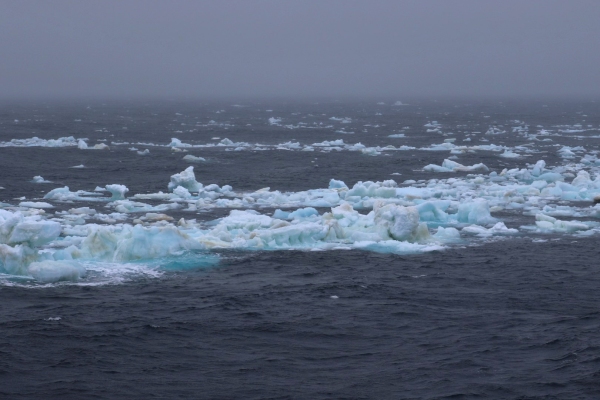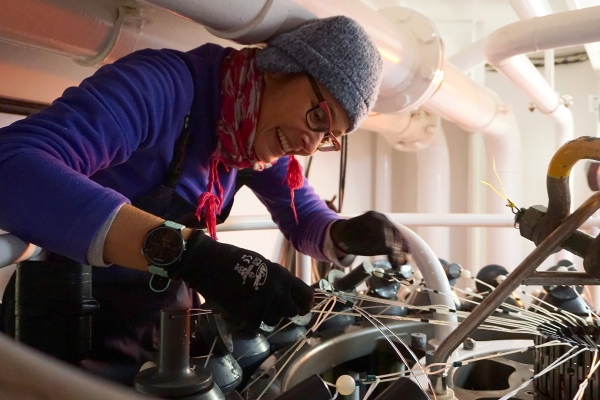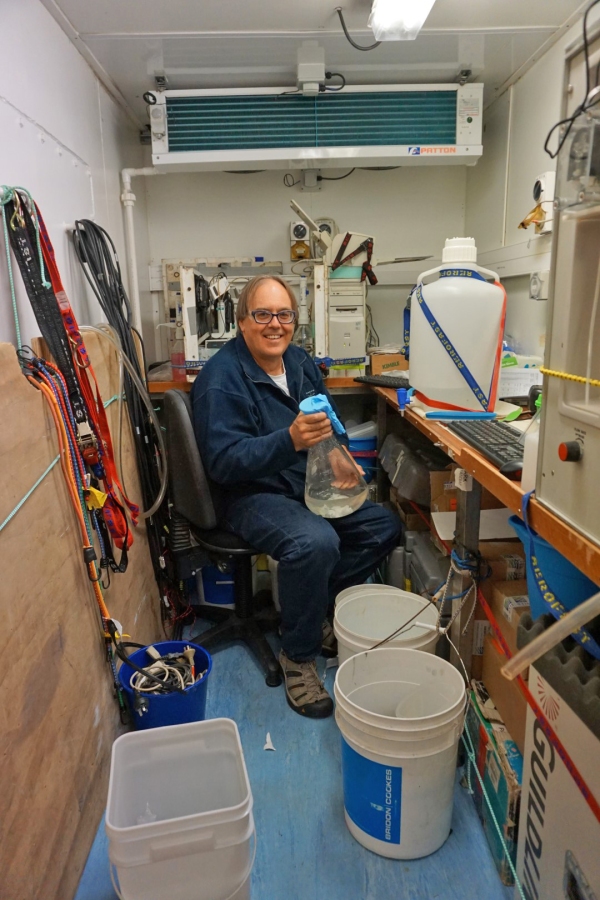17 February 2018
Every day at noon everyone on the ship gathers on the bridge for a toolbox meeting to discuss the work ahead of us for the day.
Today we were all distracted by the view as we sailed through a thick patch of brash ice and bergy bits, but not for long as the wind picked up this afternoon and strong southerly winds from the continent blew the ice away and created some challenging rough sea working conditions for our teams, and some light snow. We are at 71 degrees South and east of Cape Adare at the edge of the Ross Sea shelf break.
Our oceanography team have begun an intense phase of work, the Ross Sea Outflow Experiment. Over the next three days we will make a total of 26 CTD casts and deploy three long-term instrumented oceanographic moorings, which will stay in place for one year until the Tangaroa returns in the summer of 2019 to retrieve them.
The data collected from this cold dense water flowing out from the Ross Sea is important in determining the water properties along the East Antarctic shelf, the exchange of water between the Ross Sea continental shelf and deeper ocean, and the properties of the deep global ocean. Comparisons with previous observations from this area will show us how water properties and movement of the fronts have changed in the western Ross Sea over the past 15 years.
The microbial team will also use some of the water collected by the CTDs to investigate the physical-biological coupling of the microbial communities in this region.




